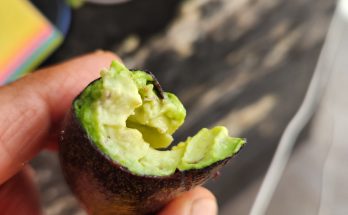By Adriana Ortega Zenteno
Part 1
El Camino de Real de Tierra Adentro is a 1,550-mile road that linked Mexico City to Texas and New Mexico during Spanish colonial times and was the major trade route north from Mexico City for almost 300 years, from the mid-16th to 19th centuries. Also known as the Royal Inland Route and the Silver Route, it was used primarily to transport silver extracted from the mines of Guanajuato, Zacatecas, and San Luis Potosí as well as mercury imported from Europe. Due to its historical significance, it is now a UNESCO World Heritage Site encompassing 60 places, including cities and numerous elements linked to the road itself such as bridges, mines, cemeteries, chapels, etc., many of which are in Guanajuato. This article focuses on the sections of El Camino Real within Guanajuato.
After the Spanish conquest of the Aztec empire in 1521, conqueror Hernán Cortés named the territory “New Spain.” Mexico City was established as its new capital, and Central Mexico became the hub for exploration and further expansion. Due to its economic and political importance, New Spain was named a viceroyalty in 1535 by the Spanish crown, and Antonio de Mendoza, an aristocrat loyal to the monarchy, was appointed viceroy. Upon his arrival, he enthusiastically pursued his duties to explore Spain’s new mainland territories and commissioned expeditions into the present day American Southwest in 1540–1542, including the creation of roads and bridges to further the expansion of New Spain.
Populating the lands of the Chichimeca was one of the goals that this skillful ruler set for himself. Thanks to his intention to colonize all the territory bathed by the Turbio River, support was achieved for Juan de Villaseñor’s project to establish the first large estate in the area of Tupátaro and Cuerámaro, which extended to Hascato novogallego. The land grants in this area are dated in 1542.
Starting from Mexico City, by the time the silver was discovered in Zacatecas, the route was already well-established to Querétaro. There was regular traffic of merchants, officials, ranchers, and their cattle through the province of Jilotepec, a region that did not offer great difficulties to the traveler. The main towns and transit stops were Cuautitlán, Tepeji, Jilotepec, and San Juan del Río. Between Querétaro and the later founding of San Felipe there were two main roads leading to Zacatecas. One went directly northeast toward San Miguel and then along the eastern bank of the river of the same name to San Felipe. The other went north through the Paso de Nieto and de Jofre to San Felipe, to join the other road in Ojuelos that also ran in that direction.
Later, around 1560, supplies began to be sent from Michoacán to Zacatecas by two main routes. One of them ran through the Valladolid-Zitácuaro-Cuitzeo-Maravatío area, passed through Acámbaro, and then headed north through Apaseo and Chamacuero until it reached San Miguel el Grande, where it joined the section of the Mexico-Zacatecas highway.
Another route, which touched the towns and ranches from Michoacán to Guanajuato, on both banks of the Lerma River and to the west of Acámbaro, passed northward near the Guanajuato mines, and then turned northeast through the Valley of Señora (where León would later be founded), to what would later be Lagos and Aguascalientes. It then proceeded directly north to Zacatecas, joining the Mexico route at Cuicillo, some nine leagues from the city of Zacatecas itself.
The opening of the Guanajuato mines in the middle of that decade gave rise to several important accessory routes to the previously mentioned roads of Mexico and Michoacán. One route ran from east to west and connected San Miguel el Grande with Guanajuato. Another linked Guanajuato with the road to Michoacán, near Silao. In addition, Guanajuato was connected to the Camino Real in the Mexico-Zacatecas section by a north-south route, that of San Felipe.
The increase in traffic to Zacatecas and Guanajuato meant that trade was regulated, and its transportation improved. At the same time, cattle ranches gained ground, parallel to and as a complement to the new needs of commerce, supplies, and mining operations. Men like Cristóbal de Oñate, Diego de Ibarra, Juan de Jaso, Francisco de Mendoza (son of the first viceroy), Alonso de Villaseca (a great businessman and miner of the period), and many others, quickly occupied the region of the Sierra de Comanja, where mines were opened at the end of the 1550s.
The military and population advance displaced the “white Chichimecas” from the lands of Guanajuato and led the Spanish occupation along the Mexico-Zacatecas highway, through the province of Querétaro, to the north from the small settlement of San Miguel el Grande. Many of these ranchers who also exploited mines, took advantage of their new ranches for mining operations, thus increasing the traffic of roads and trains throughout the Great Chichimeca lands. (Rodríguez Frausto, 1982, pp. 23-25).
To be continued…




